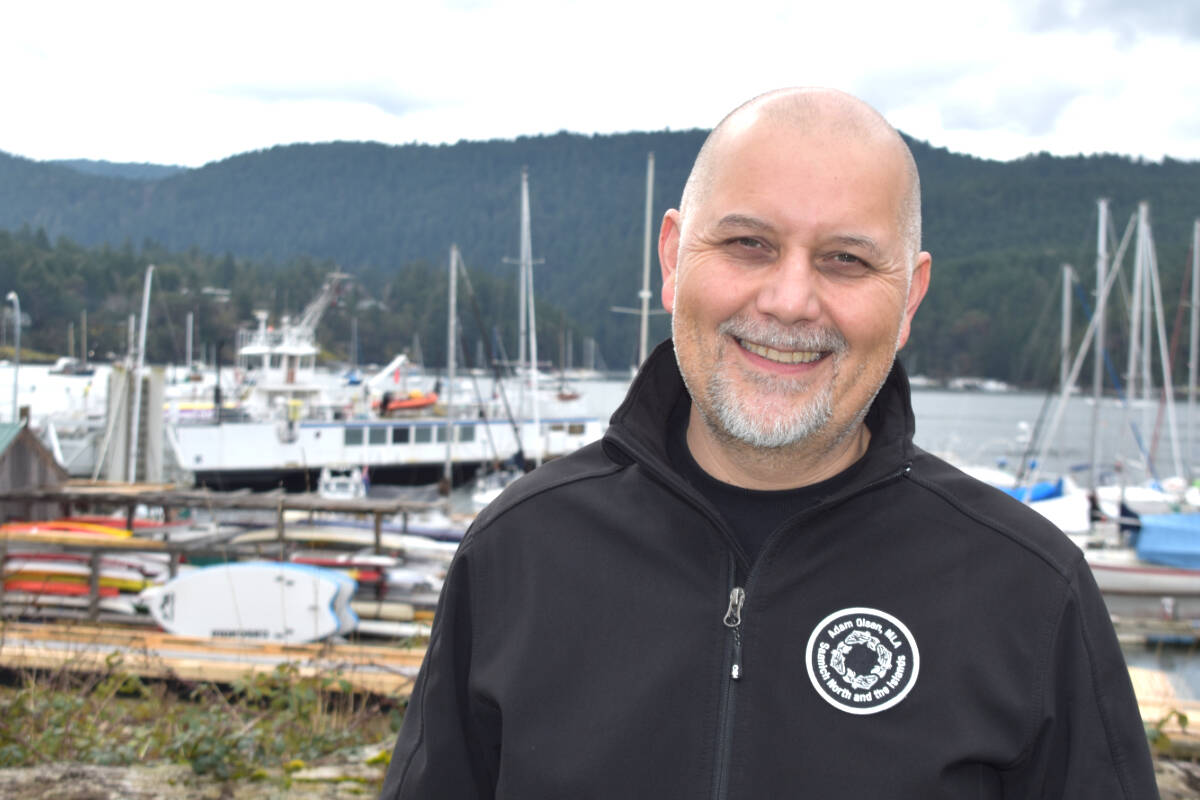Rare is the opposition politician who praises government policy, but BC Green House Leader Adam Olsen, MLA for Saanich North and the Islands, used an unusual measure Friday to highlight the provincial government’s climate action tax credit.
“Many British Columbians woke up to a nice little rebate from the provincial government today,” Olsen said on social media Friday (Jan.5). “Did you know that’s thanks to the carbon tax? It’s enough to buy at least a dozen chickens!”
Many British Columbians woke up to a nice little rebate from the provincial government today. Did you know that's thanks to the carbon tax?
It's enough to buy at least a dozen chickens! 😉
— Adam Olsen (@AdamPOlsen) January 5, 2024
The fowl reference to the carbon tax can be read as Olsen’s belated response to Conservative of BC Leader John Rustad, who had pecked away at the issue during the last meeting day of the legislature in 2023, offering the following calculation.
“The carbon tax, when you’re filling up a tank of gas of 60 litres, equates to about $16 when gas is at $2,” Rustad said. “Just to put that in perspective of what that means for British Columbians that are going to Costco, that’s the equivalent of buying two rotisserie chickens.”
He and Conservative House Leader Bruce Banman later reiterated the point by actually tabling two rotisserie chickens.
The NDP & BC United-Liberals’ Carbon Taxes cost YOU $16 every time you fill up your tank… That’s enough money for YOUR family to buy two rotisserie chickens at Costco! #bcpoli pic.twitter.com/jjyWdxS4la
— John Rustad (@JohnRustad4BC) November 30, 2023
Citing affordability concerns, Rustad’s party has promised to cut the carbon tax as part of a broader roll-back of measures to fight climate change.
The provincial carbon tax currently sits at $65 per tonne of CO2 and will go up to $80 per tone on April 1 with the actual per-litre charge different for different types of fuel. Annual increases will bring the tax rate to $170 per tonne by 2030.
The climate action tax credit promises to protect affordability by offsetting these increases.
Payments go out on a quarterly basis (July, October, January and April) with amounts varying depending on income.
According to government, single individuals can now receive as much as $447 per year, more than double what they would have received in 2022 and families of four can receive as much as $893.50, following changes to the actual payments and eligibility rules.
According to government, 70 per cent of eligible families and individuals receiving quarterly payments can expect maximum amounts with the income ceiling increasing annually. According to government, the income threshold will go up annually with the goal of reaching 80 per cent of households.
Finance Minister Katrine Conroy Friday (Jan. 5) framed the credit as a response to global inflation and an expensive holiday season.
“(We) know people need support now more than ever,” she said. “By boosting the Climate Action Tax Credit, we are providing more help with costs for people in B.C. as we also drive down emissions and grow the economy,” she added. “While others would hike fees and give polluters a free pass, we’re taking action to support people and create a more sustainable future so people can build a good life in B.C.”
The quarterly payment will appear on bank statements as a payment from the Government of Canada, despite being a payment from the provincial government, because the money will come through the Canada Revenue Agency along with the federal GST/HST credit.
@wolfgangdepner
wolfgang.depner@blackpress.ca
Like us on Facebook and follow us on Twitter.

